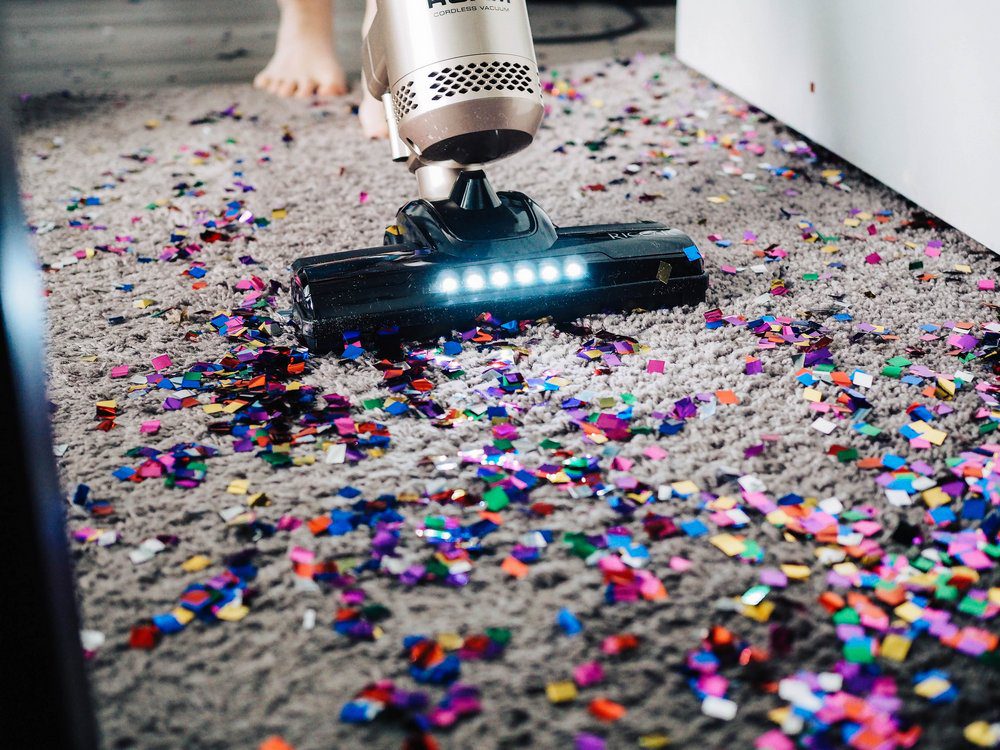Last Updated on October 30, 2025 by teamobn
When most people think of pollutants, the air quality in their homes does not usually come to mind. However, you may be surprised to hear there are many toxins in even the cleanest homes and according to the Environmental Protection Agency (EPA), the air quality in many homes and places of business can be worse than the air outside with the concentrations of some pollutants often being two to five times higher than typical outdoor levels. Poor air quality within a home can be the result of several factors including:
- Byproducts of Combustion: Cigarettes, gas, wood, kerosene and coal-burning appliances, and fireplaces all release harmful toxins into the air such as carbon monoxide and tobacco smoke.
- Cleaning Products: Cleaning supplies can release harmful chemicals into the air, including ammonia and bleach.
- Paint and Personal Care Products: Volatile organic compounds (VOCs) are byproducts of many hair sprays, perfumes, paints, and varnishes.
- Biological Contaminants: These include pet dander, mold, mildew, bacteria, molds, dust, mites, and pollen.
- Outdoor sources: Contaminants such as radon, which forms from the natural decay of uranium in soils and rocks can enter a home through cracks and holes in the building’s foundation.
With all of these potential sources of pollution, it is important to do what you can to keep the air quality within your home clean. In this article, we will look at some tips to improve the indoor air quality of your home.
Contents
Use Air Cleaners
An air cleaner can do much to improve the air quality within your home. This can be achieved in many ways including using a portable air cleaner or fitting an air filter into your heating, ventilation, and air-conditioning (HVAC) system.
Portable air cleaners can filter the air within your home environment helping to reduce indoor air pollution while air purifiers will sanitize the air by emitting ozone, negative ions, or short-wave UV light. In general, an air purifier is more effective at killing mold, bacteria, and viruses whereas an air cleaner such as a Merv 11 filter will be more efficient at trapping dust and airborne particles.
Make sure to regularly clean and replace your air filters to ensure they are working optimally and not redistributing pollutants back into the air.
Ventilate Your Home
You can reduce the levels of air pollutants within your home by allowing in more outdoor air. Regularly opening your windows and doors is a simple and natural ventilation method to reduce or dilute pollutants from your indoor environment and improve the air quality.
It is especially important to ventilate your home when doing activities such as cleaning, painting, and decorating. Chemicals found within solvents, paint, cleaning products, and aerosols contain VOCs which can cause irritation to the eyes, nose, and throat as well as induce headaches, dizziness, and nausea.
Vacuum Regularly
Regularly vacuuming will significantly reduce the amount of dust, pollen, pet dander, and other pollutants in your air. Your carpet can harbor many unwanted allergens and particles that vacuuming can eliminate. Dirty carpets also have an increased chance of developing mold and mildew, especially in areas with high humidity, which also contribute to the pollutants in the air.
Pollutants such as pollen, dust mites, and bacteria can also attach themselves to pet fur bringing it into your home environment, so vacuuming is particularly important if you have pets such as cats and dogs, that naturally shed hair.
Remove Damp and Mold
Microbial pollution from mold, mildew, bacteria, and fungus can create indoor pollution in your home when there is moisture from high humidity or dampness.
There are also steps you can take to reduce the likelihood of dampness and mold in your home. For example, hang your washing outdoors if possible or use a dryer. Drying your clothes indoors can lead to moisture and condensation build-up so make sure to use a dehumidifier or open a window to allow the water vapor to escape.
It is important to control the humidity in your home as too much can spawn microbial pollution from mold and mildew. It is recommended to keep it between 30% to 50%. If you have damp areas in your home such as a basement, humidity regulation is advisable.
Buy Air-Purifying Indoor Plants
According to NASA’s Clean Air Study, there are a variety of plants that can reduce indoor pollution. For instance, Peace Lilies can significantly reduce chemicals such as ammonia, benzene, formaldehyde, and trichloroethylene from the air, while Snake plants can help to purify your indoor environment through their unique ability to convert carbon dioxide into oxygen at nighttime, making them perfect for bedrooms. Other houseplants that can improve air quality include:
- Dracaena Fragrans or Dragon plant
- Boston fern
- Chinese evergreen
- Aloe Vera
- Barberton Daisy
- Spider plant
- Bamboo palm
Use Natural Cleaning Products
Many household cleaning products and air fresheners can actually increase the amount of pollution in your home by emitting VOCs, greenhouse gases, and other toxic air contaminants, and your carpets, drapes, and upholstery can absorb some of these harmful chemicals.
Consider using natural cleaning products instead, such as vinegar, baking soda, or lemon juice. Rather than liquid cleaners, white wine vinegar can be substituted for cleaning windows, and glass surfaces and for descaling appliances such as kettles. Baking soda can act as a gentle abrasive to naturally remove many stains and to dissolve organic material such as grease and dirt without releasing harmful chemicals into the air you breathe.
Burn Beeswax Candles
Many candles contain chemicals that can spread throughout your home negatively affecting its air quality. Beeswax candles do not release any toxicity when they burn and actually create negative ions which purify the air instead, by removing pollutants.
The negative ions produced when the candle is lit neutralize the positively charged particles from airborne pollutants such as dust, pollen, and mold, thereby improving the quality of the air.
Don’t Smoke Indoors
Smoke from cigarettes is a harmful pollutant that will severely impact the air quality in your home. It contains many carcinogens and chemicals such as methane and carbon dioxide which are hazardous to your health and will also produce odors that linger and are absorbed by the fibers in your carpets, drapes, and furnishings.
By following the tips and suggestions in this article, you can greatly improve the air quality in your home.






